For content creators, Grammarly stands out as a staple.
Known as one of the best grammar checking tools around, it’s now positioning itself as an AI detector and humanizer.
But here’s the million-dollar question: Does Grammarly’s AI humanizer actually work?
The results might surprise you.
With AI-generated content flooding the internet, everyone’s scrambling to make their text sound more human.
Students want to avoid academic penalties. Content creators need to bypass detection tools.
Businesses want authentic-sounding copy.But not all humanizers are created equal.
Today, we’re diving deep into Grammarly’s AI humanizer feature to see if it lives up to the hype or if you’d be better off looking elsewhere.
Key Takeaways
- Grammarly’s AI detector works well for identification, but struggles with humanization.
- The humanizer produces mixed results that still trigger AI detection tools.
- Undetectable AI consistently outperforms Grammarly in bypass testing.
- Grammarly costs significantly more for similar word limits.
- Purpose-built tools beat multi-feature platforms for specialized tasks.
What Is the Grammarly AI Humanizer?
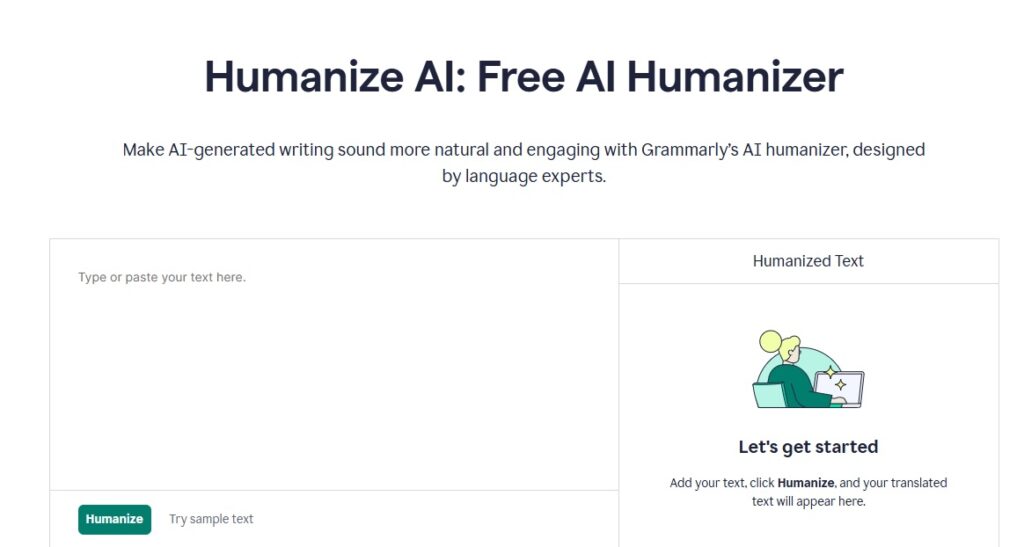
Grammarly’s AI humanizer is the newer sibling in its product family.
While the company made its name with its grammar-checking tool, it has since expanded into AI detection and text humanization.
The feature works as part of Grammarly’s broader writing assistant.
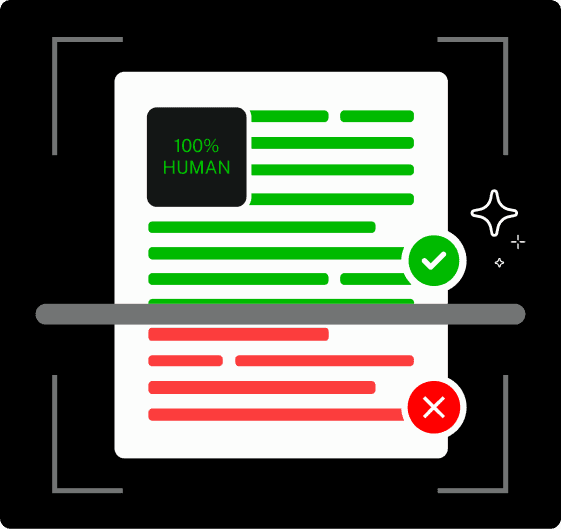
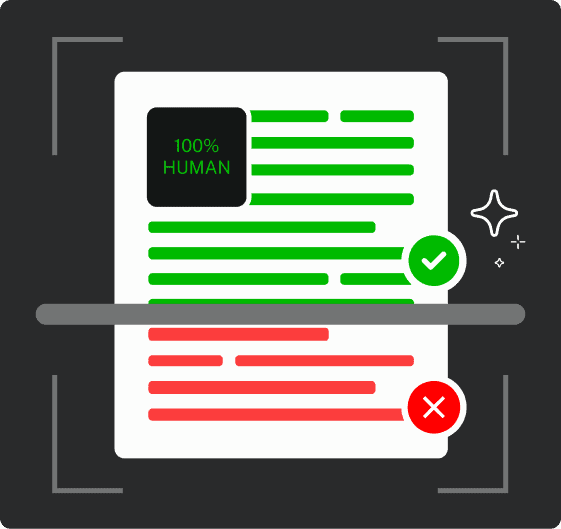
Never Worry About AI Detecting Your Texts Again. Undetectable AI Can Help You:
- Make your AI assisted writing appear human-like.
- Bypass all major AI detection tools with just one click.
- Use AI safely and confidently in school and work.
You paste in your AI-generated text, and it attempts to rewrite it in a more natural, human-sounding way.
The goal? Making your content undetectable to AI detection tools.
Sounds simple enough, right?
The thing is that Grammarly didn’t build this as its core product.
It’s more like a side feature tucked into their grammar tool, and that distinction matters more than you might think.
How Does Grammarly AI Humanizer Work?
The process is straightforward. You input your AI-generated text into Grammarly’s interface.
The tool analyzes the content and suggests rewrites to make it sound more human.
The algorithm looks for patterns that scream, “AI wrote this.” These include repetitive sentence structures, overly formal language, and predictable word choices.
Then, it attempts to fix these issues.
Grammarly’s approach focuses heavily on grammar and style corrections rather than deep structural changes.
This makes sense given their foundation, but it’s not always what you need for effective humanization.
Intended Use Cases
Grammarly markets its humanizer for several scenarios:
- Students who want to polish AI-assisted research without triggering academic integrity tools.
- Content creators who need blog posts that pass platform detection systems.
- Business professionals who want emails that sound naturally written.
The tool also targets users who want to maintain their voice while using AI assistance.
The idea is to allow for the efficiency of AI while preserving human authenticity.
But what they want and what they can deliver are two different things.
Does It Really Fool AI Detectors?
Here’s where we get into the nitty-gritty. We followed ZDNet’s benchmark methodology to test whether Grammarly can actually fool AI detectors.
ZDNet previously highlighted Undetectable AI as one of the few tools achieving perfect scores, so we used that as our comparison standard.
The Test
We prepared two text samples for testing:
- Human-written content drafted without any AI assistance. This served as our control sample.
- GPT-generated text produced entirely by ChatGPT. This represented typical AI-generated content.
Both samples went through Grammarly’s AI detector and Undetectable AI’s detector for comparison.
The Results
| Content Type | Grammarly Result | Undetectable AI Result | Correct? |
| Human-Written | 0% AI (Human) | 94% Likely Human | ✅ Both Correct |
| GPT-Generated | 100% AI | 92% AI Probability | ✅ Both Correct |
Grammarly Detector – Human Written Result:
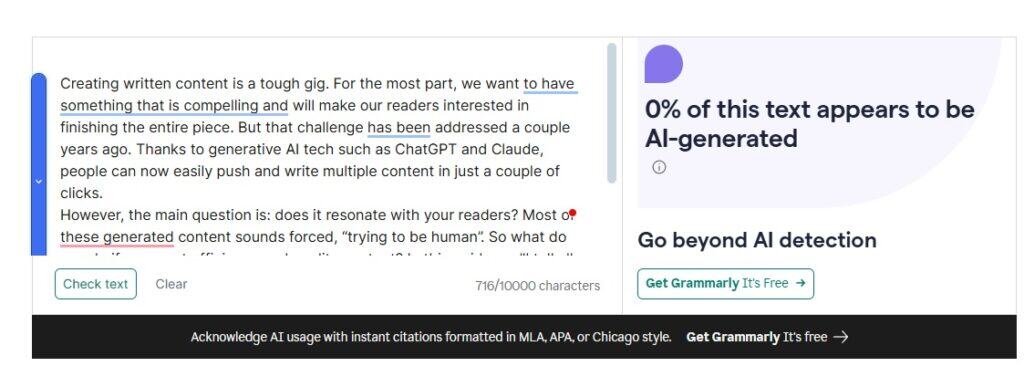
Undetectable AI Detector – Human Written Result:

Both tools correctly identified our samples. Grammarly’s binary approach gave us a definitive “100% AI” label. Undetectable AI provided nuanced probability scoring with “92% AI likelihood.”
Grammarly Detector – GPT Output Result:
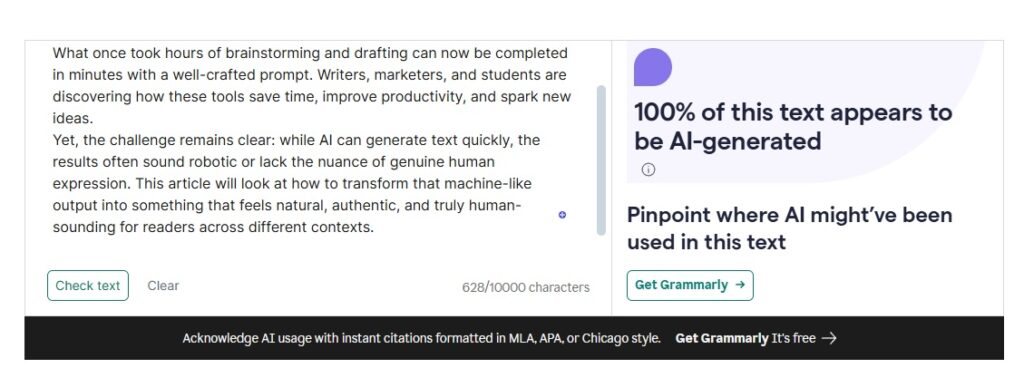
Undetectable AI Detector – GPT Output Result:

Here’s what we learned: Grammarly can detect AI content accurately.
But detection is only half the battle. The real test comes with humanization.
Undetectable AI’s probability system offers more actionable insights.
Instead of just saying “this is AI,” it shows how strongly the text leans toward artificiality.
That extra context helps users understand AI content detection accuracy much better.
Also worth noting is that Grammarly treats AI detection as a secondary feature within its grammar tool.
Undetectable AI built its entire platform around detection and humanization.
That focus shows in the results.
Real-World Example: Output Comparison
Detection accuracy is one thing. Actually making AI content sound human is another beast entirely.
We took the same GPT-generated text and ran it through both Grammarly’s humanization feature and Undetectable AI’s humanizer.
Then we tested both outputs using GPTZero to see which one actually passed.
The results were eye-opening.
| Version | Sample Output | GPTZero Result |
| Original GPT Text | Raw AI output | 100% AI-generated |
| Grammarly Humanized | Processed through Grammarly | 76% Mixed (part AI, part human) |
| Undetectable AI Humanized | Processed through Undetectable AI | 99% Human (passes cleanly) |
Grammarly Humanized Output – GPTZero Result:

Undetectable AI Humanized Output – GPTZero Result:

The difference is stark. Grammarly’s humanizer reduced the AI detection score but didn’t eliminate it.
GPTZero still flagged the content as “Mixed,” meaning it detected AI traces.
Undetectable AI delivered completely different results. GPTZero classified its output as 99% human.
That’s not just better performance—it’s the difference between passing and failing.
This tells us something important about tool design. Grammarly excels at grammar correction and has some AI detection capabilities.
But consistent AI humanization requires specialized architecture that Grammarly simply doesn’t have.
Why Grammarly’s Humanizer Falls Short
The core issue comes down to purpose and design philosophy.
Grammarly built its reputation on grammar checking and writing enhancement.
However, its AI detection and humanization features feel like add-ons rather than core competencies.
The algorithm prioritizes grammatical correctness over detection avoidance.
This shows in the output quality. Grammarly-processed text often retains telltale AI patterns such as repetitive sentence structures, predictable transitions, and an overly formal tone.
These are exactly what advanced AI detectors look for.
The tool also lacks a sophisticated understanding of how different detectors work. Each AI detection system has unique algorithms and triggers.
Effective humanization requires adapting to these various approaches.
Grammarly takes a one-size-fits-all approach that simply isn’t enough in today’s detection landscape.
What Makes Undetectable AI’s Humanizer the Superior Choice
Undetectable AI was built from the ground up for one specific purpose: making AI content undetectable. That singular focus creates several advantages.
First, it intimately understands detection algorithms. The platform continuously updates its humanization strategies based on how different detectors evolve.
This isn’t an afterthought feature, but their entire business model.
Second, the output quality reflects this specialization.
Undetectable AI doesn’t just fix grammar or adjust tone. It restructures content at a deeper level to eliminate AI fingerprints while preserving meaning and readability.
Third, they offer transparency in their process. You can see probability scores, understand what triggered detection, and track improvements after humanization.
This level of insight helps users refine their content strategy.
The platform also provides specialized tools for different use cases. Academic writing requires different humanization than marketing copy.
Undetectable AI recognizes these nuances.
Key Feature Comparison: Grammarly vs Undetectable AI

Let’s break down how these platforms stack up across key categories:
Detection Accuracy:
- Grammarly: Good for basic detection, binary results
- Undetectable AI: Excellent accuracy with probability scoring
Humanization Effectiveness:
- Grammarly: Partial success, often leaves AI traces
- Undetectable AI: Consistently passes major detectors
Specialization:
- Grammarly: Multi-purpose writing tool with AI features
- Undetectable AI: Purpose-built for AI detection and humanization
Output Quality:
- Grammarly: Maintains good grammar, limited structural changes
- Undetectable AI: Deep content restructuring while preserving meaning
User Interface:
- Grammarly: Familiar, integrated with existing workflows
- Undetectable AI: Clean, focused interface designed for specific tasks
Updates and Maintenance:
- Grammarly: Periodic updates as a secondary feature
- Undetectable AI: Continuous algorithm improvements as core focus
For users who need reliable AI humanization, the choice becomes clear. Grammarly works fine for general writing enhancement.
But when you need content that actually bypasses detection systems, specialized tools deliver better results.
We’d recommend Undetectable AI’s detector and humanizer to verify AI detection and convert AI-sounding text to one that sounds naturally human.
The platform’s focus and track record speak for themselves.
Pricing: Which Offers More Value?
Cost considerations matter, especially for non-business users.
Let’s examine what you get for your money with each platform.
Grammarly Pricing:
Free Plan:
- Basic spelling and grammar checking
- $0 per month
- No AI humanization features
Premium Plan:
- Advanced grammar checking
- Tone adjustment capabilities
- 1,000 AI prompts monthly
- $12 monthly (annual billing) or $30 monthly
- Basic AI detection included
Business Plan:
- Team collaboration features
- Brand voice consistency
- 2,000 AI prompts monthly
- $15 per user monthly (annual) or $25 monthly
- Advanced AI detection and limited humanization
Undetectable AI Pricing:
Yearly Plan:
- 10,000 words monthly for humanization
- Unlimited AI detection
- All core features included
- $5 monthly (billed annually at $60)
- Money-back guarantee if content gets flagged
Monthly Plan:
- 20,000 words monthly
- Full feature access
- $19 monthly with no commitment
- Same guarantee and features
Business Plan:
- Custom word limits
- Non-expiring credits
- White-label options
- Custom pricing based on needs
The value proposition differs significantly. Grammarly costs more but offers broader writing assistance.
Undetectable AI costs less while delivering superior humanization results.
For users focused specifically on AI detection and humanization, Undetectable AI provides better value.
You get more words processed at a lower cost with higher success rates.
Grammarly makes sense if you need comprehensive writing assistance and occasional AI humanization.
But for consistent, reliable bypass capability, the specialized platform wins in terms of both performance and price.
Detect AI patterns and humanize your writing in seconds—use the widget below.
More Than Commas: The Real Test of AI
After extensive testing and comparison, the verdict is clear: Undetectable AI is the superior choice for AI humanization.
Grammarly remains an excellent grammar checking and writing enhancement tool, and its AI detection feature works well for identification purposes.
But when it comes to actually humanizing AI-generated content, it falls short of what users need.
The test results don’t lie. Grammarly’s humanizer produced mixed results that still triggered detection systems.
Undetectable AI consistently delivered content that passed as human-written across multiple detectors.
This difference stems from fundamental design philosophy.
Grammarly treats AI humanization as a secondary feature within its broader writing platform.
Undetectable AI built its entire system around this specific challenge.
Grammarly’s existing features might suffice for users who occasionally need AI detection. But anyone serious about consistently bypassing AI detectors should choose the specialized solution.
The pricing comparison reinforces this conclusion. Undetectable AI delivers better results at lower cost with stronger guarantees.
And we even offer a money-back promise if their humanized content gets flagged as AI.
Ready to see the difference for yourself?
Try Undetectable AI’s AI Humanizer today and experience what purpose-built AI humanization can do.
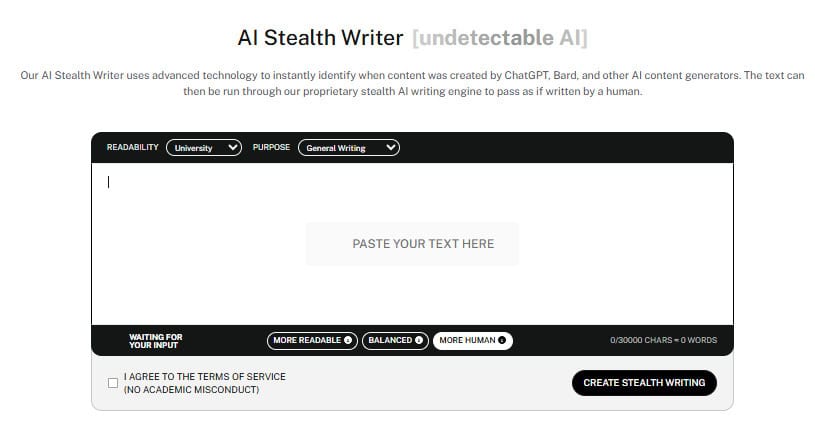
While you’re exploring, check out our other specialized tools like the AI Detector for verification, the Stealth Writer for creative content, and the Essay Rewriter for academic applications.
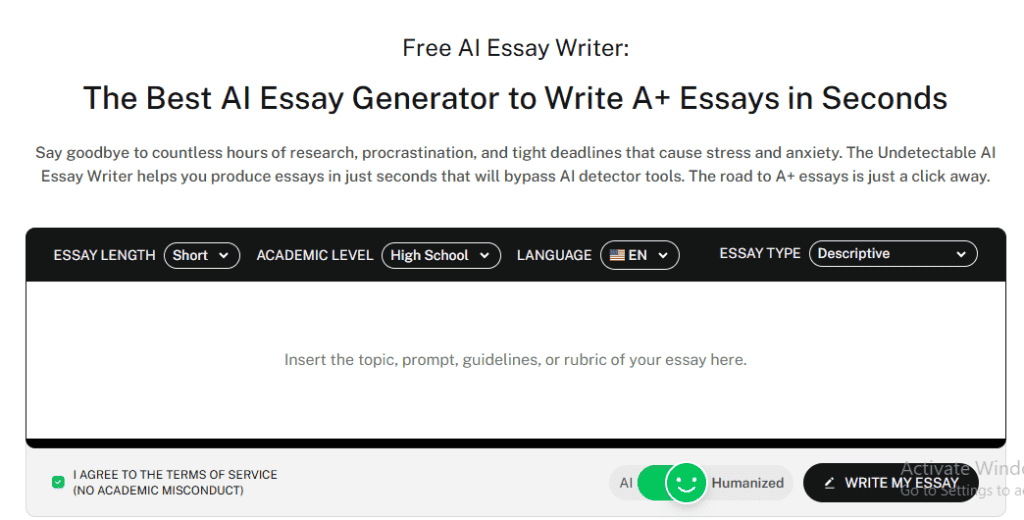
The age of AI-generated content is here to stay, and we want to make sure you have the right tools to navigate it successfully.
With Undetectable AI, you’re not just keeping up with the future of writing, but staying one step ahead of it.
